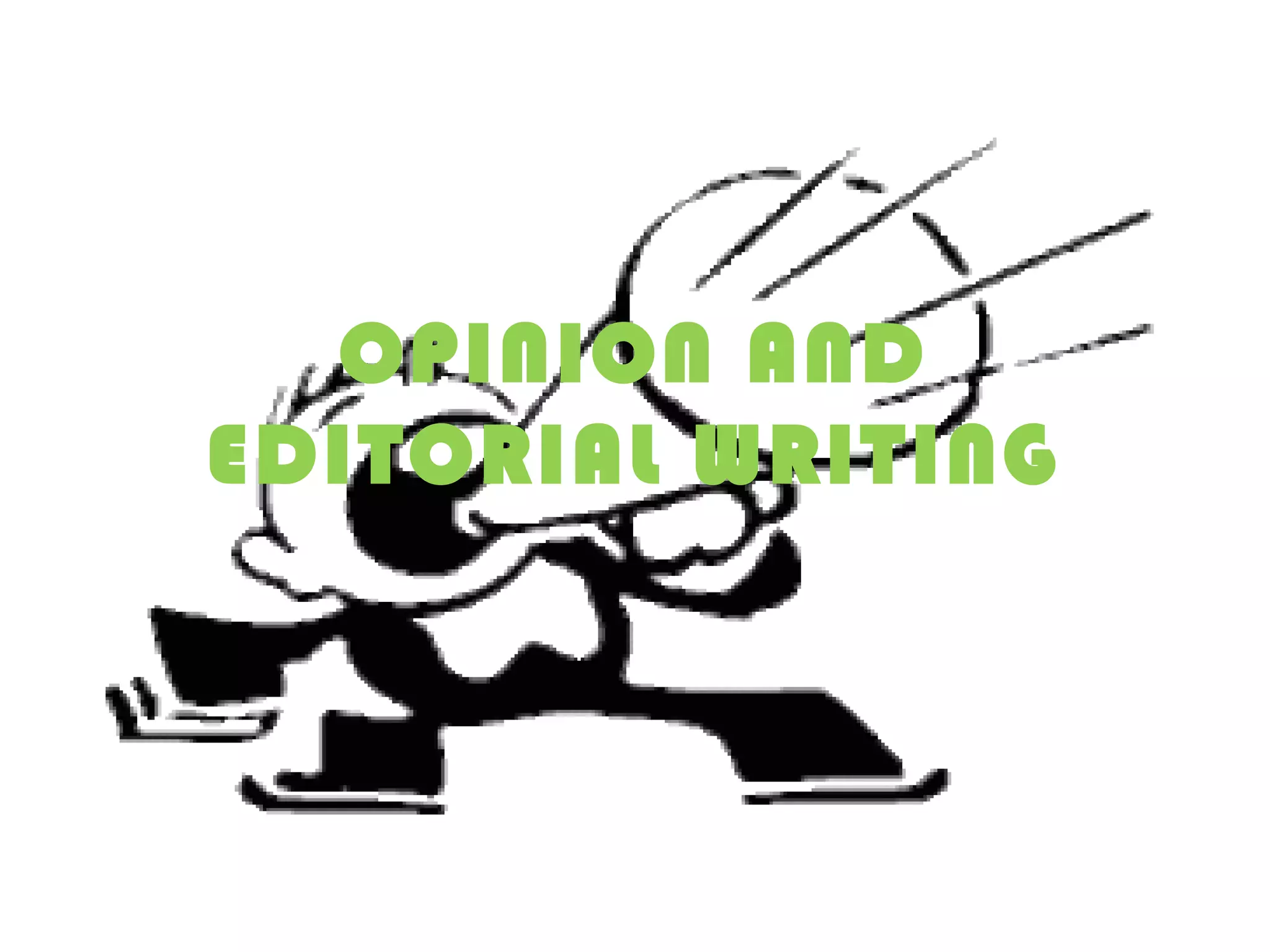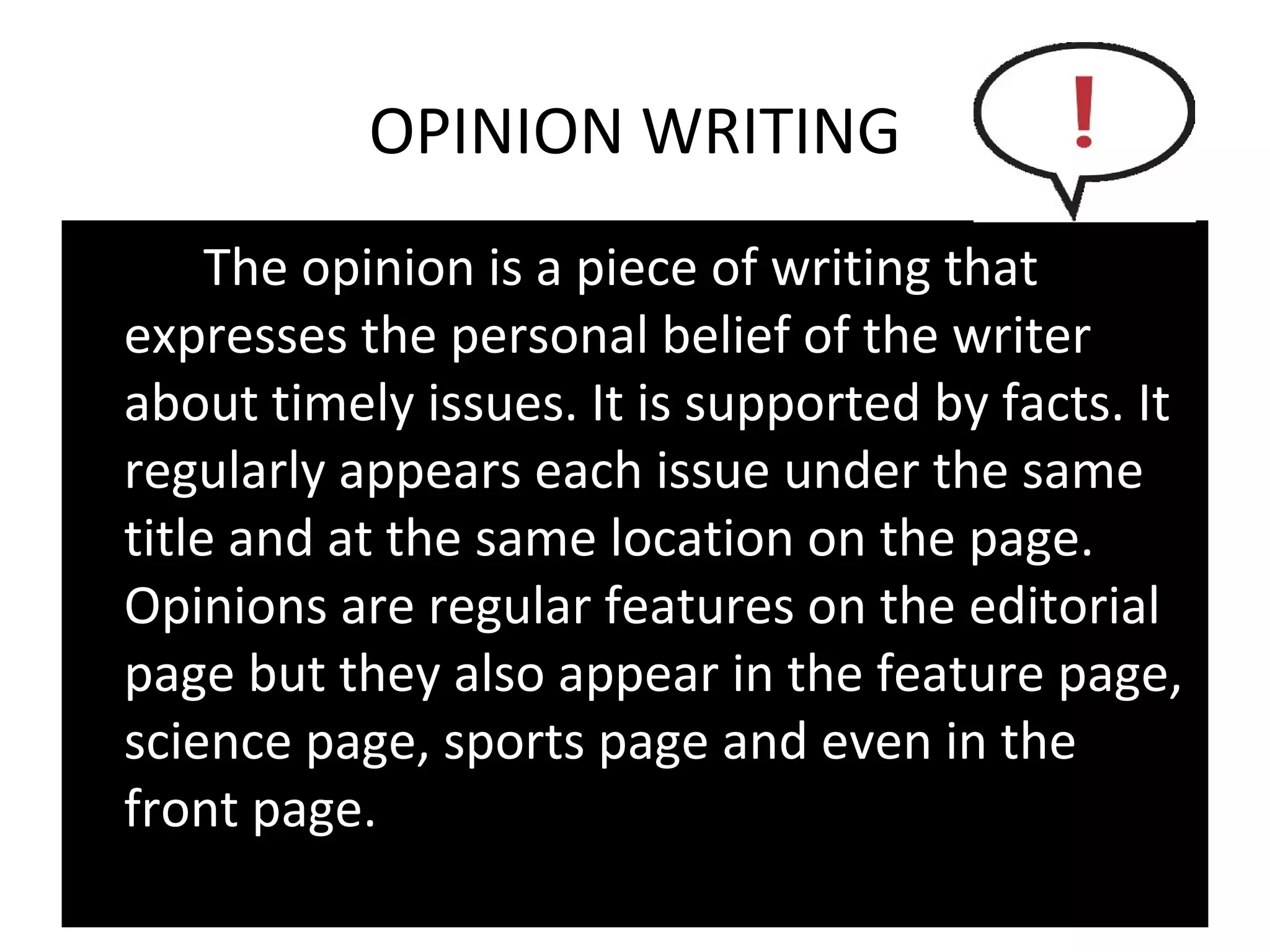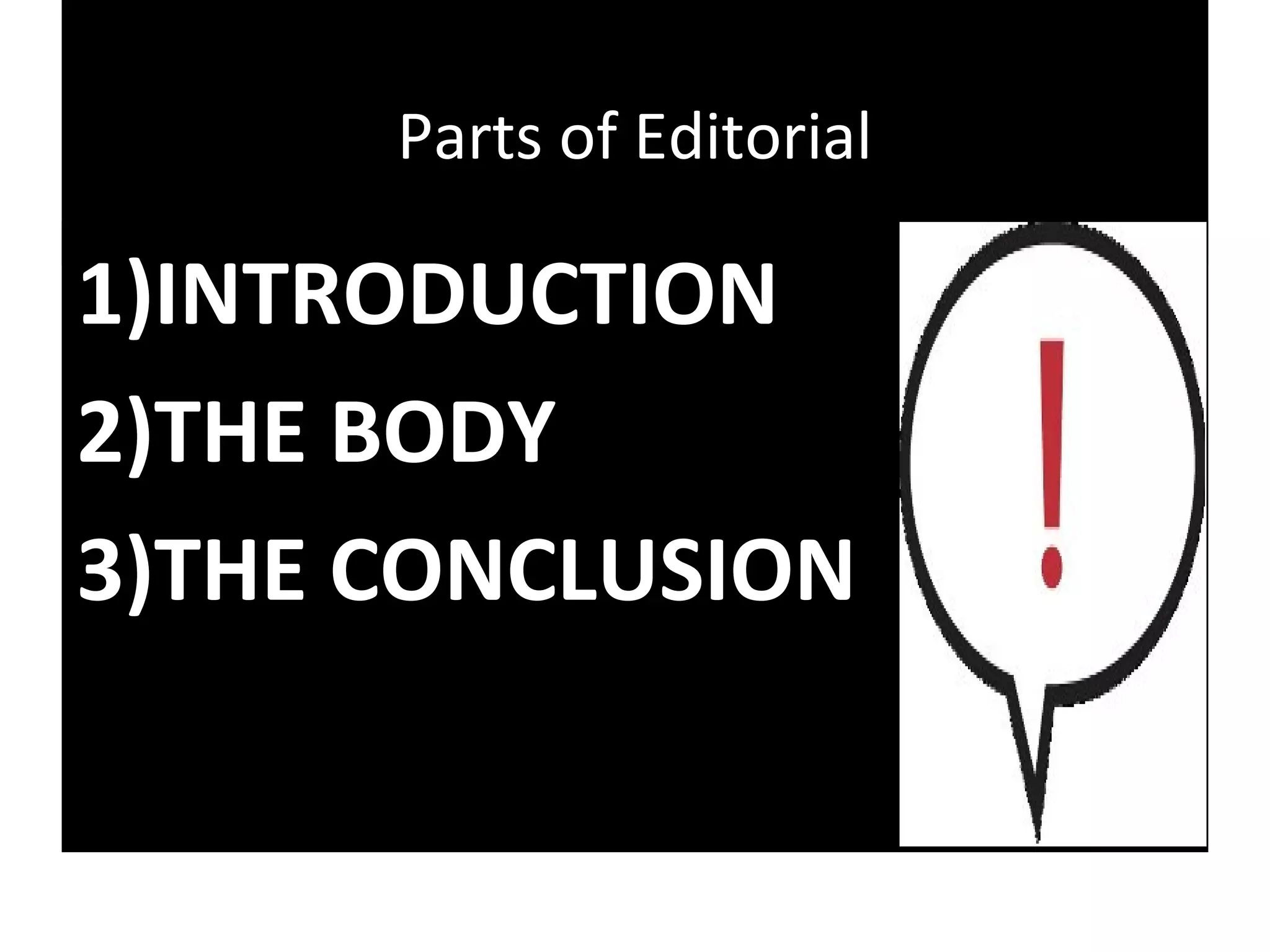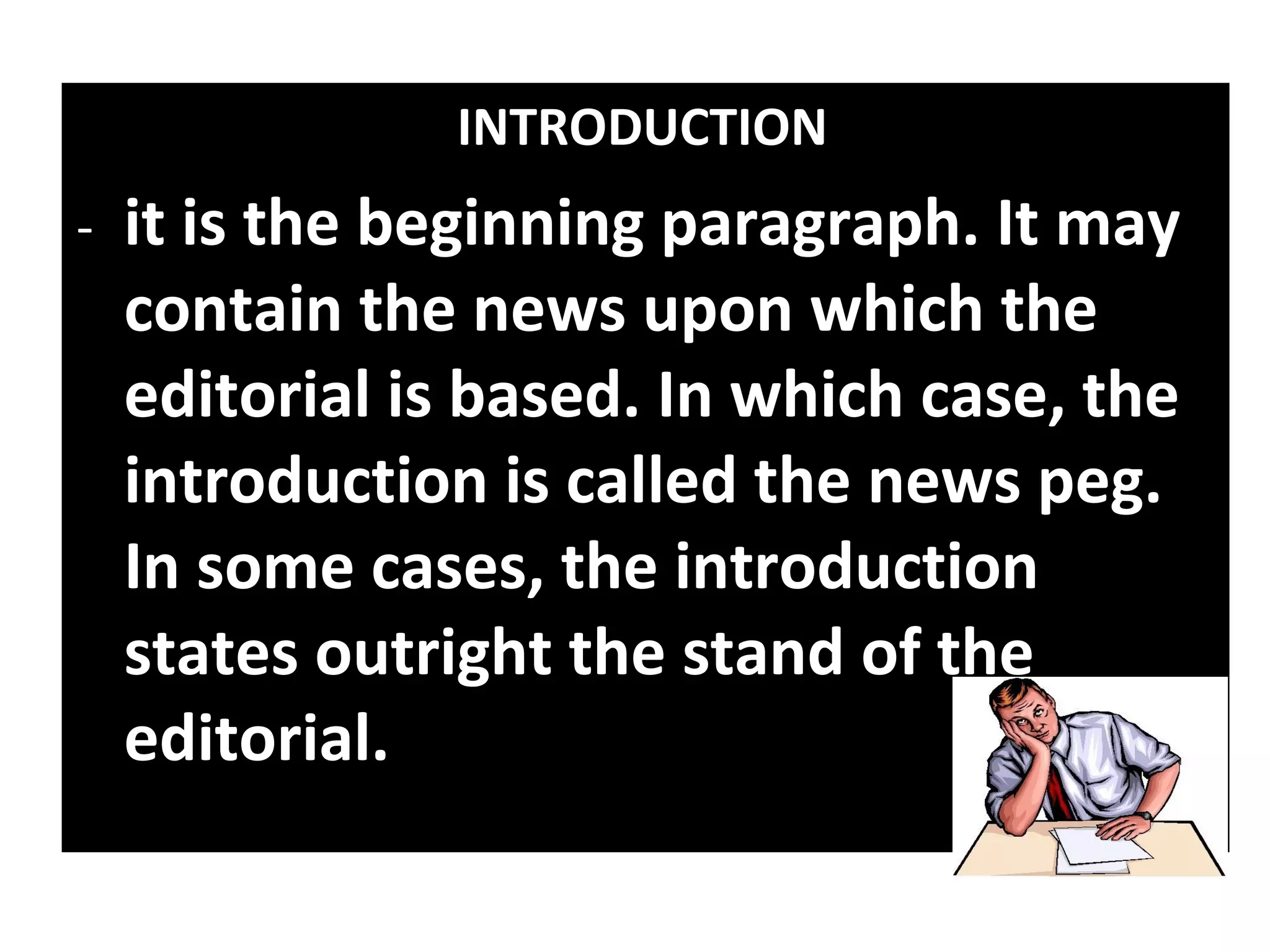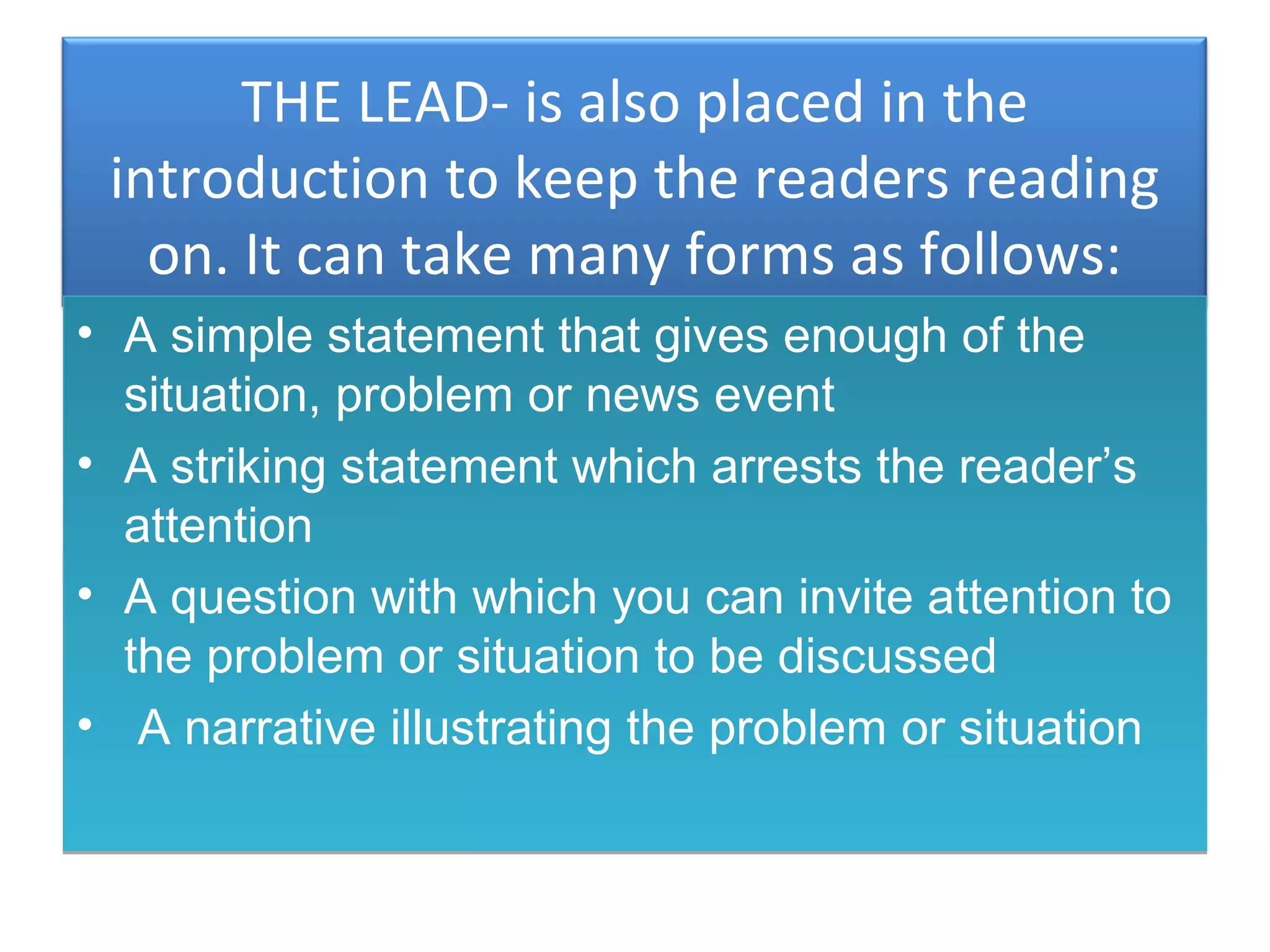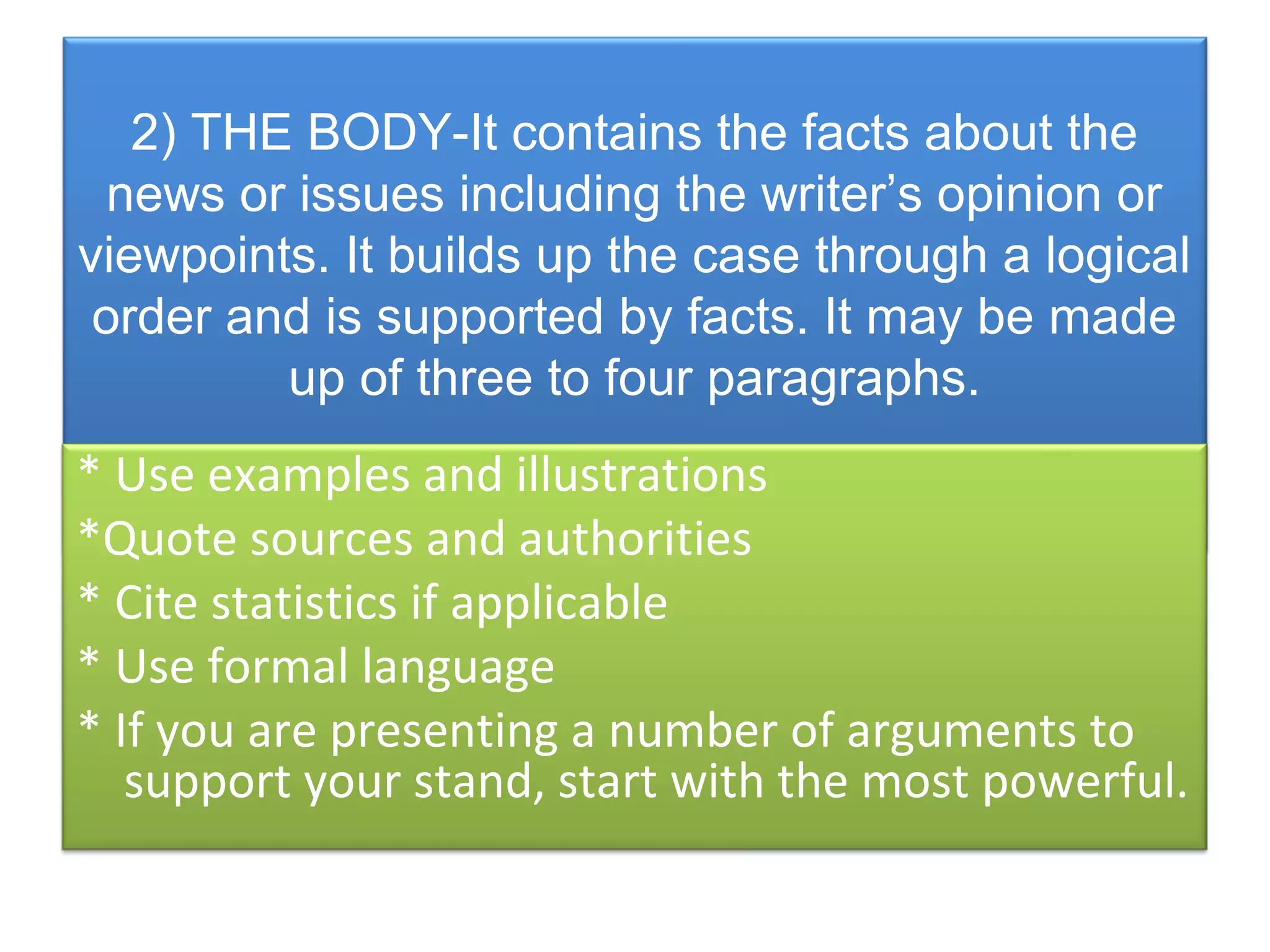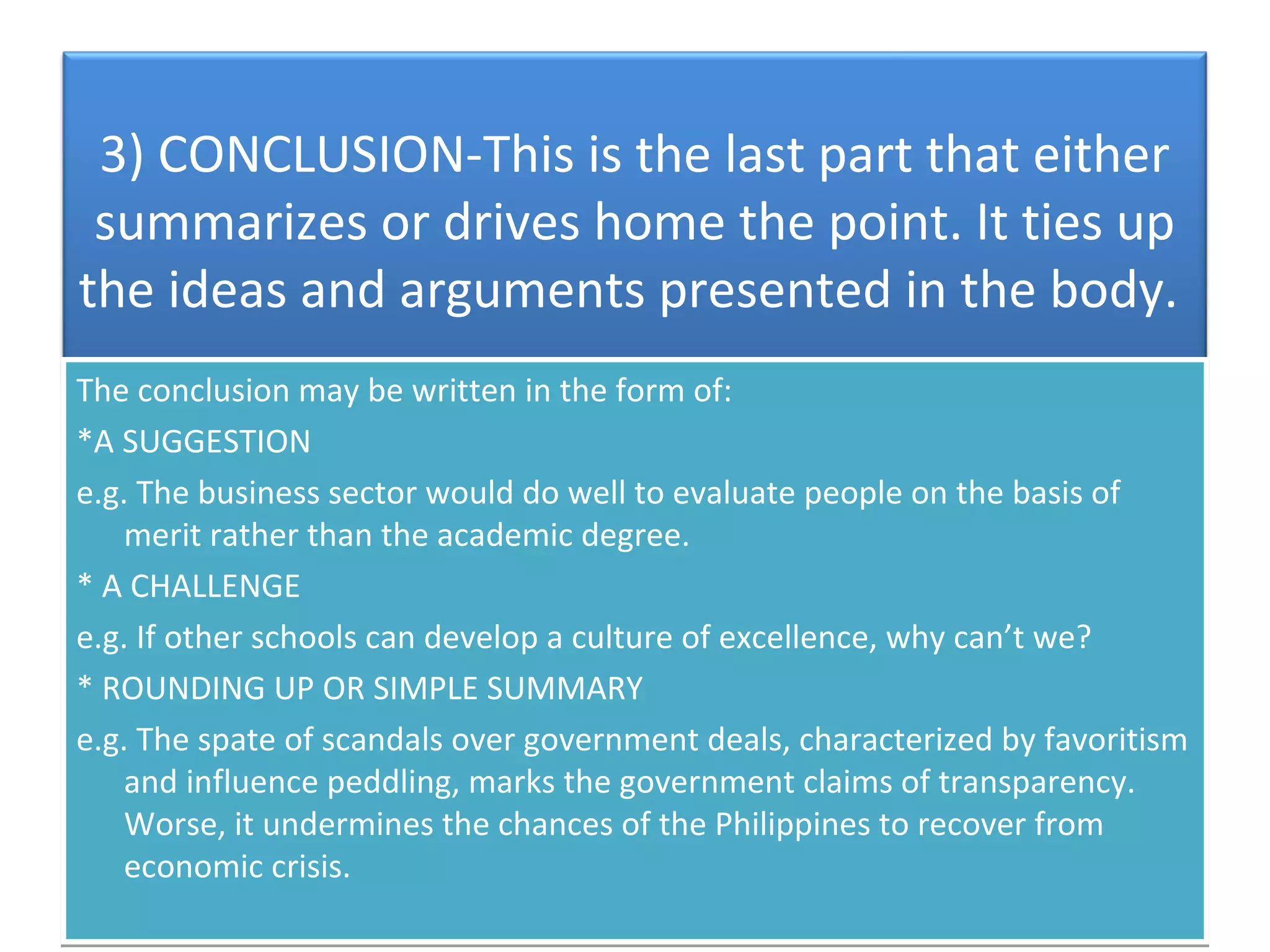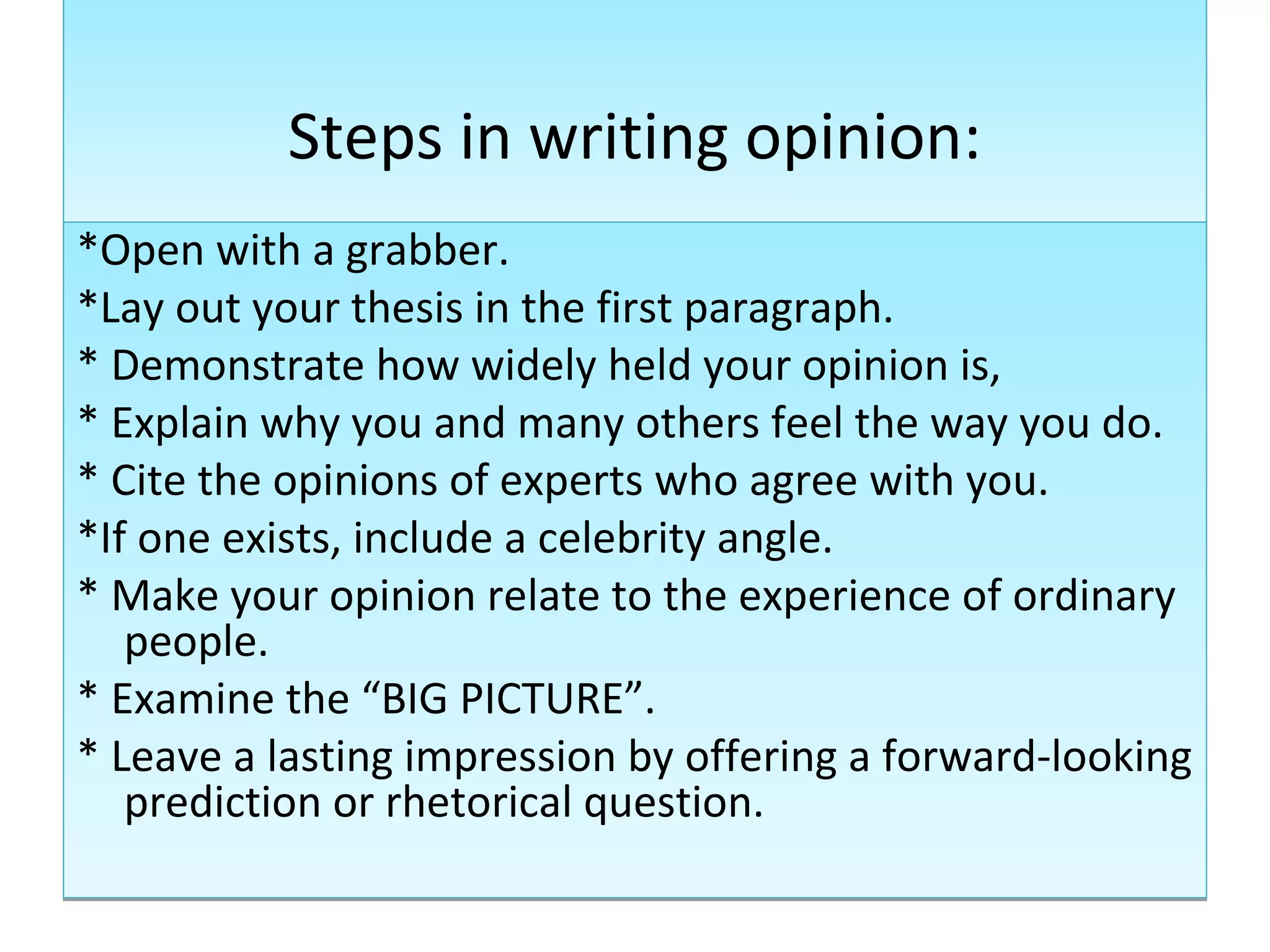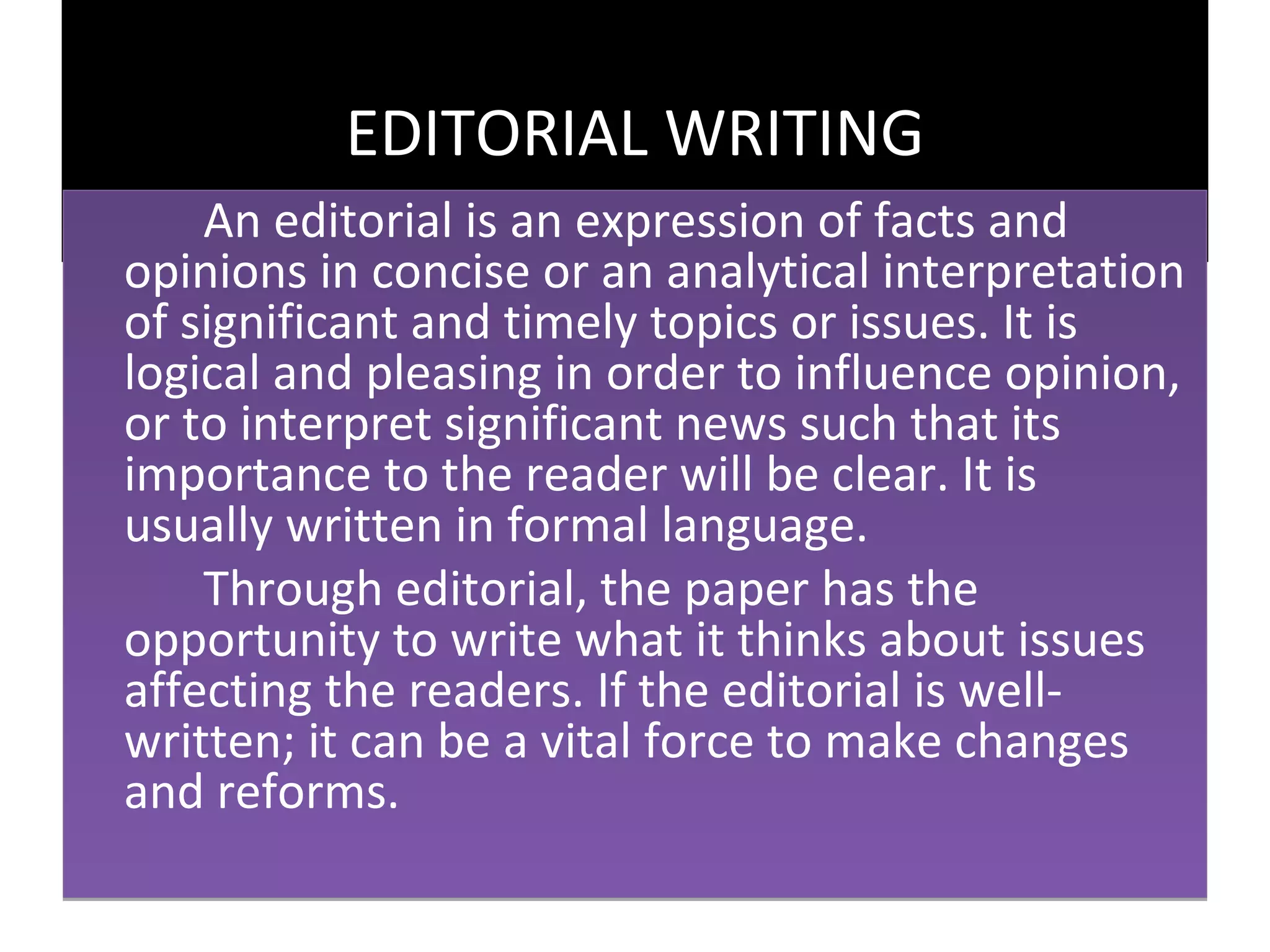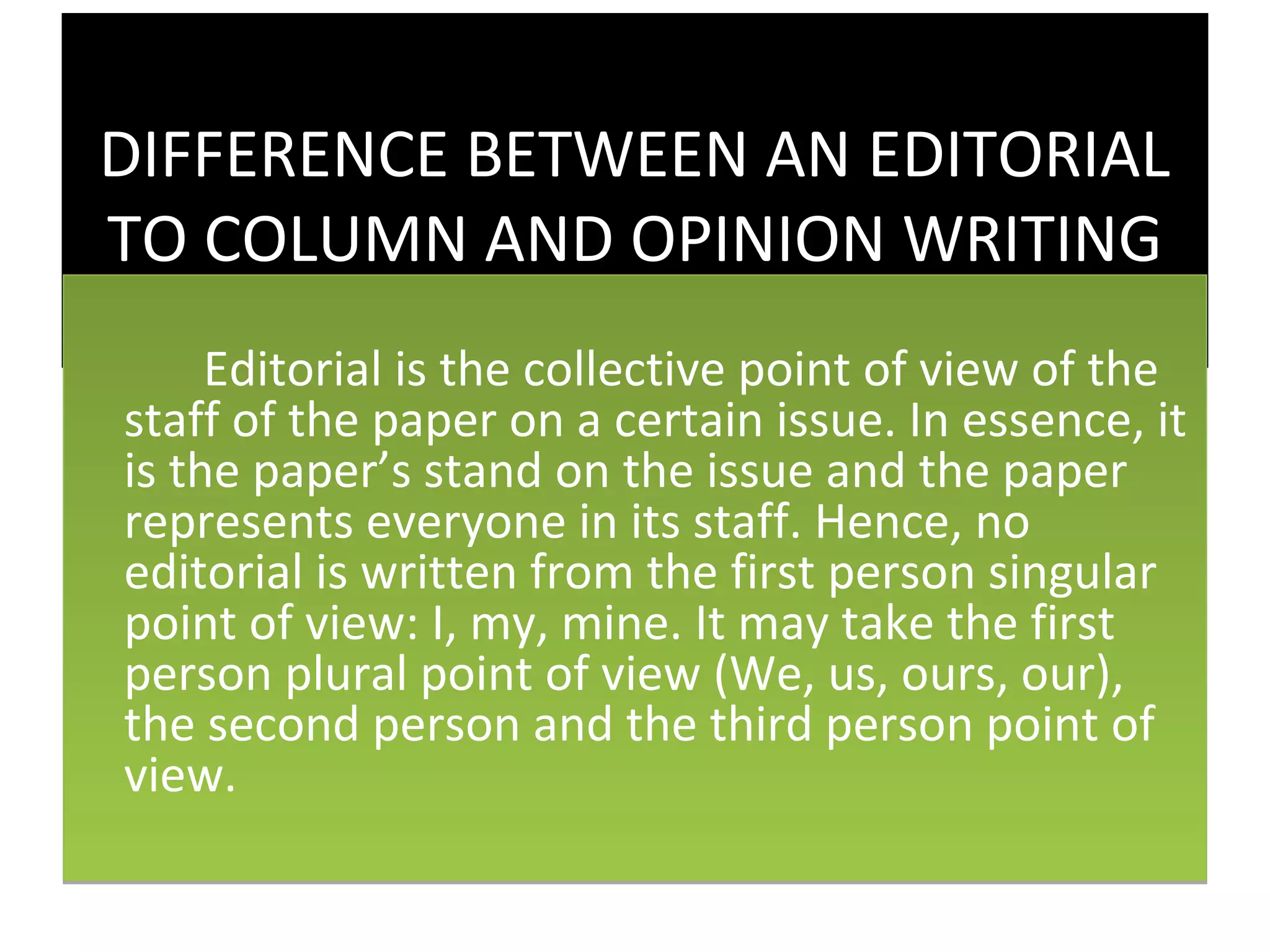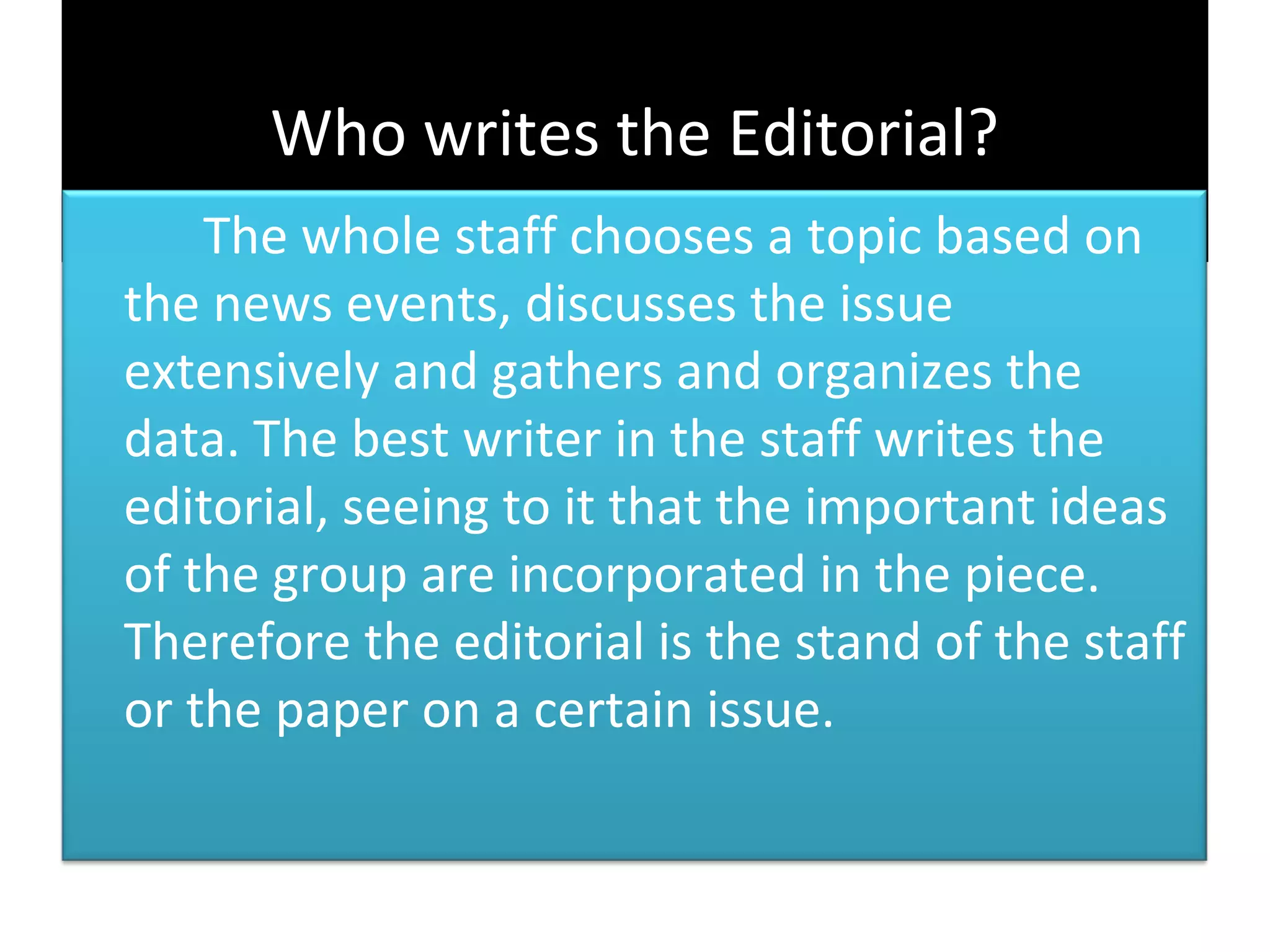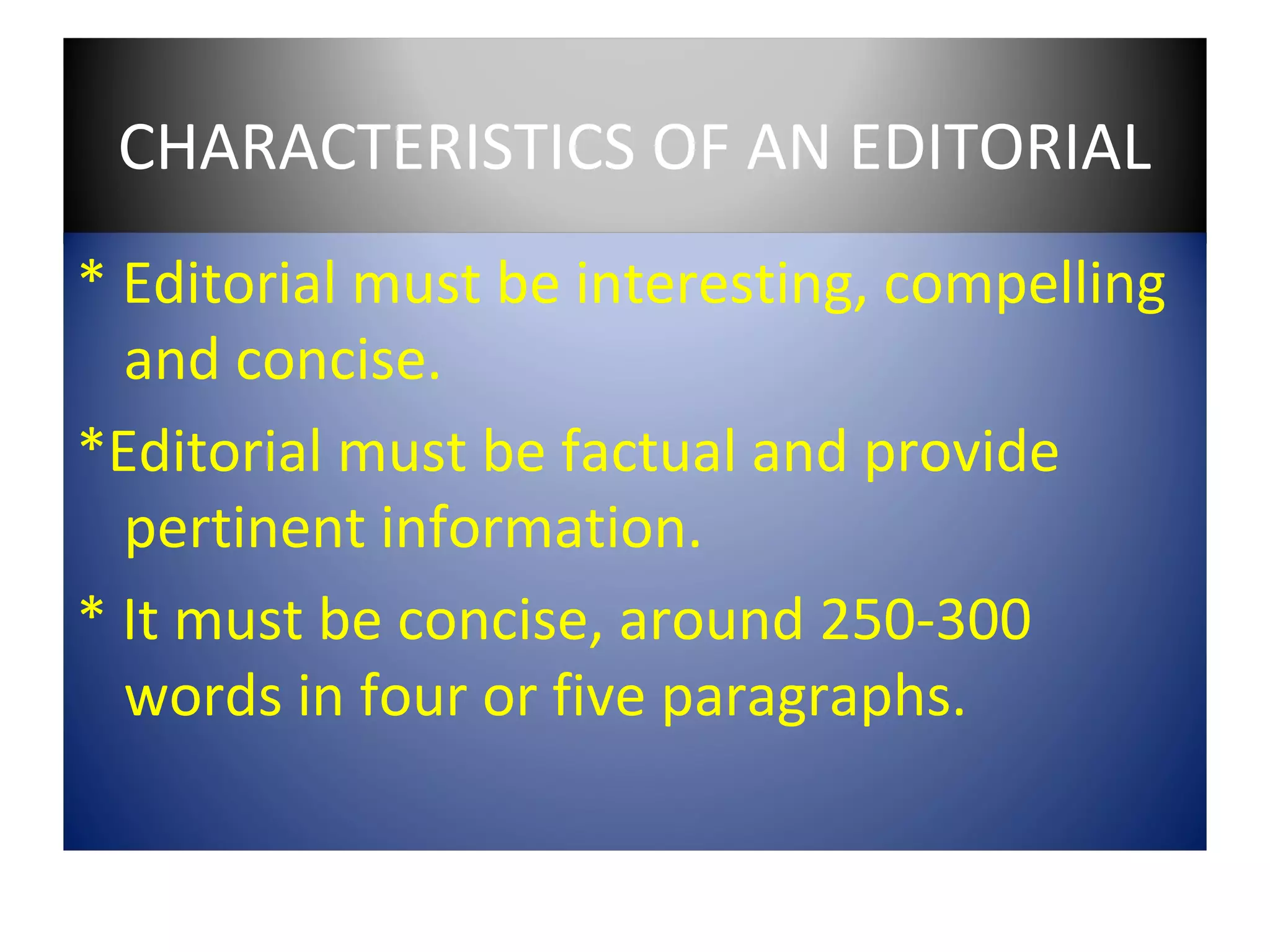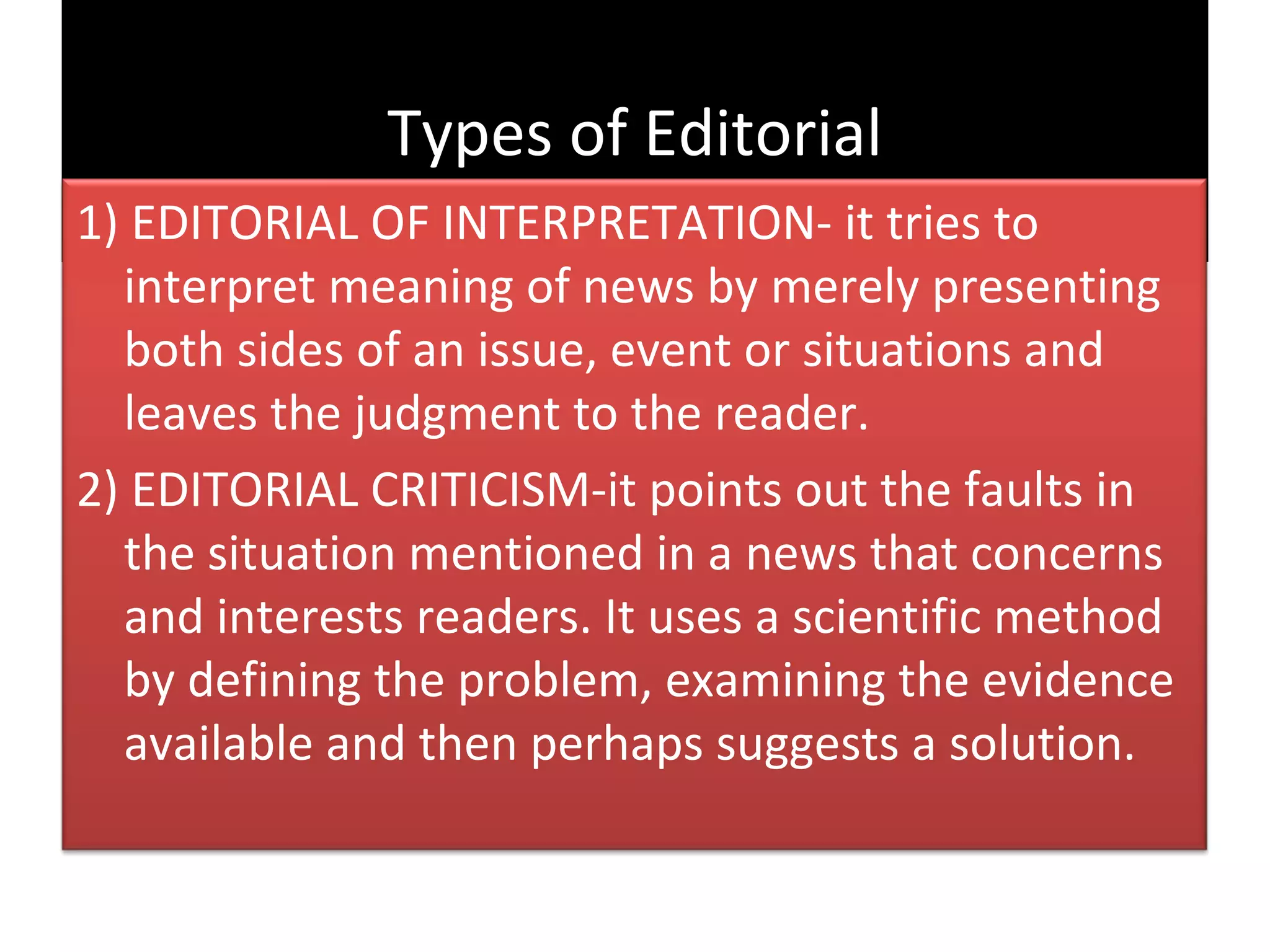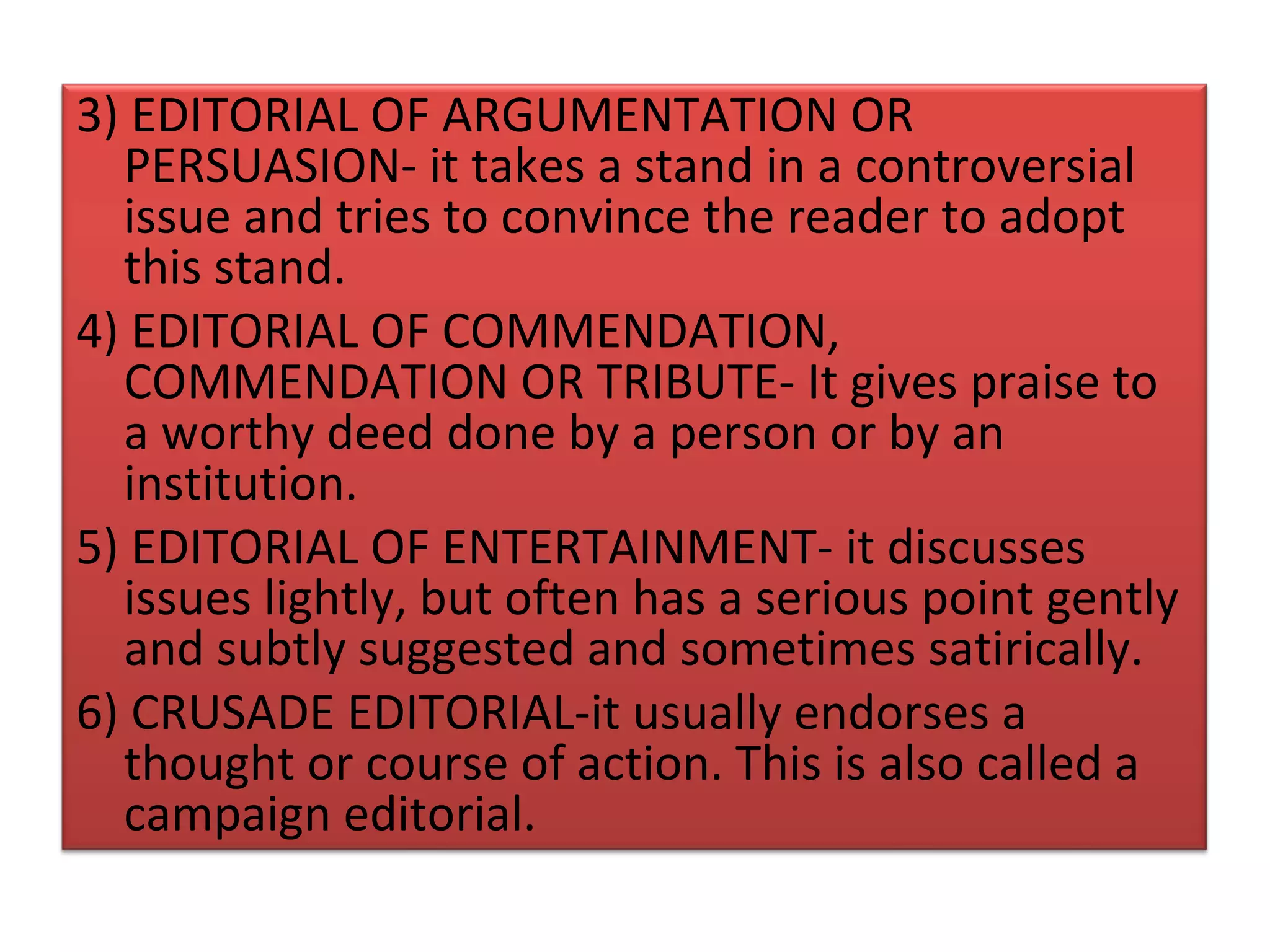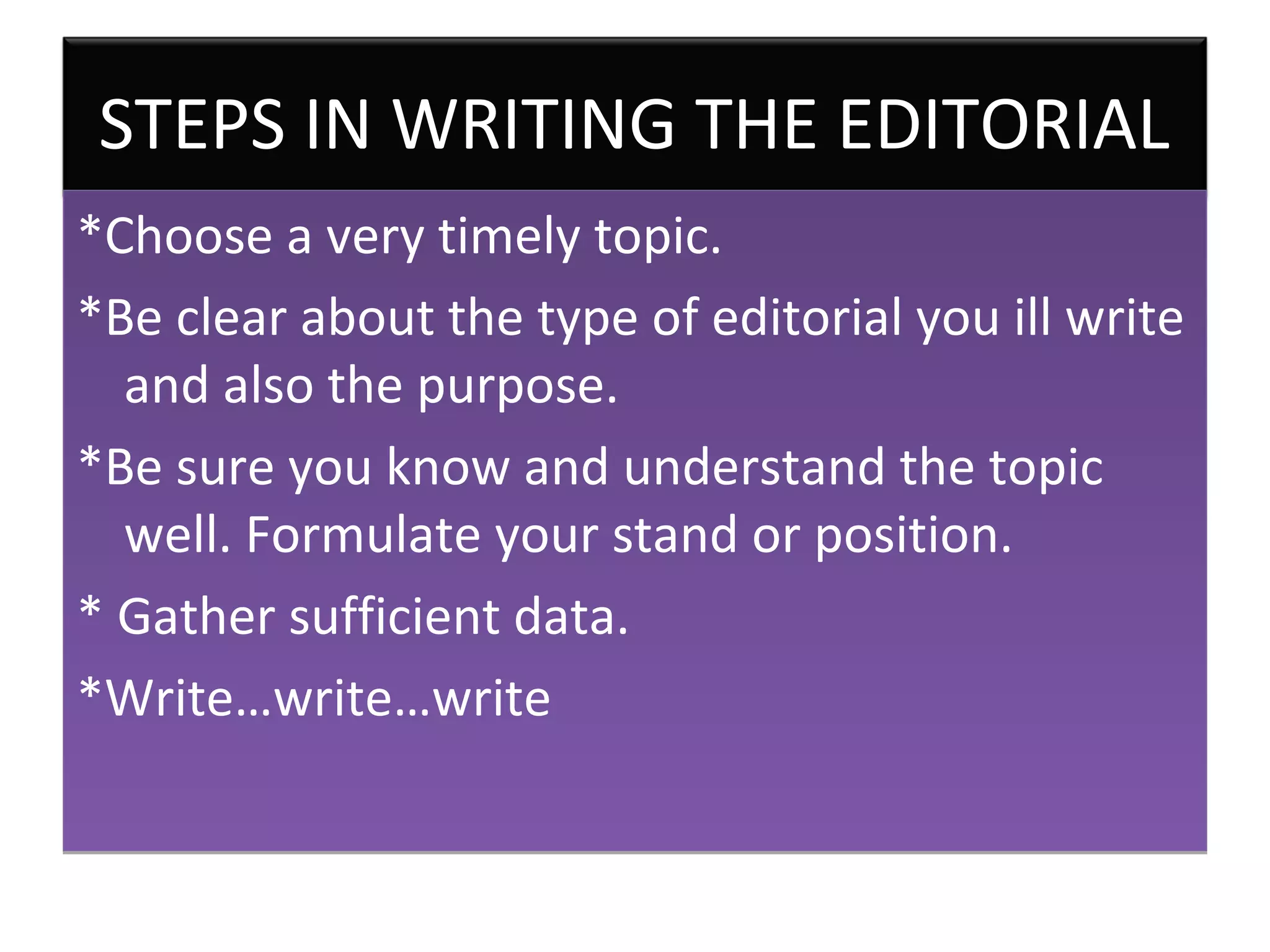This document provides information on writing opinions and editorials. It defines opinion writing as expressing a personal belief about timely issues supported by facts. Editorials are written from the publication's perspective and aim to logically interpret or influence readers on significant topics. They follow a structure with an introduction stating the topic, a body with facts and arguments, and a conclusion summarizing the main points. The document also distinguishes editorials from columns and opinions and provides tips for effective editorial writing.
